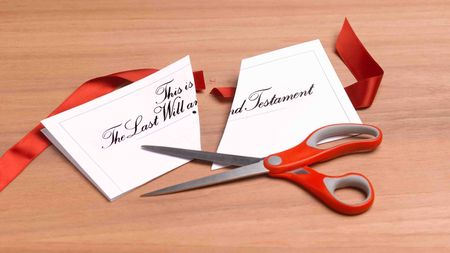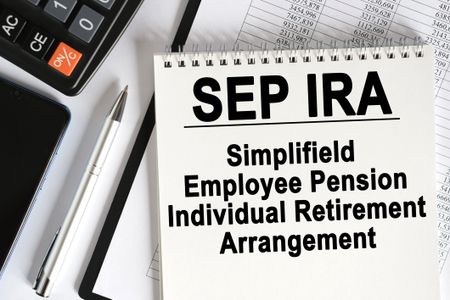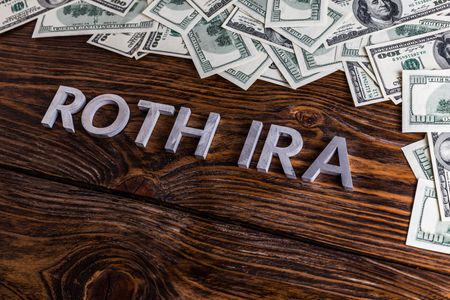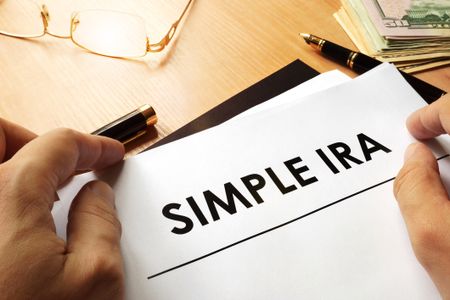What to Do With Old 401(k) Accounts
Here's how to handle your retirement money when you leave a job behind.
OUR READER
Who: Erin Scottberg, 27
Where: Brooklyn, N.Y.

Sign up for Kiplinger’s Free E-Newsletters
Profit and prosper with the best of expert advice on investing, taxes, retirement, personal finance and more - straight to your e-mail.
Profit and prosper with the best of expert advice - straight to your e-mail.
Question: What should I do with my retirement accounts from previous employers?
These days nobody sails through life with just one employer, and Erin is no exception. When she left a post last November as a Web editor at AOL to join an Internet start-up, she bid adieu to a solid company and its established retirement plan. Her new employer, the online dating site HowAboutWe.com, doesn't offer retirement benefits, so Erin has a decision to make about her future: how to handle, or not handle, her past 401(k) investments.
Erin has two 401(k)s from previous jobs, each worth less than $3,000. She's also taken the precaution to build a savings account that could last six months if her job or her employer doesn't work out. She is free of student-loan debt, so she can concentrate on building retirement savings. Her questions are where and how. "I would like something that I can leave alone and let grow," Erin says. "But I want to understand what's happening."
This situation isn't unique to Internet entrepreneurs. When you take a new job, you usually leave behind a company 401(k) plan (or the public-employee equivalent). You'll surely wonder, if only for the sake of simplicity, whether to combine that money with other retirement savings. "It's a good habit and good discipline to roll all of the accounts into an IRA," says Janet Stanzak, an adviser with Financial Empowerment, in Bloomington, Minn.
New Wrinkles
But simplicity isn't always best. For instance, you might want to keep an existing 401(k) if the plan includes company stock you prefer to hang on to, or if the plan offers privileged access to another distinctive investment. An example is a stable-value account, a fixed-value fund that may yield as much as 4% now and will pay more as interest rates climb. Stable-value accounts rarely appear outside retirement plans, so if yours has one, you might want to keep it.
In Erin's case, however, it's sensible for her to close her previous accounts and consolidate the money into an IRA, either a traditional or a Roth account. With a Roth, she'd have to pay immediate taxes on the conversion, but she'd benefit from tax-free income in retirement. A Roth can also double as a mid-range savings account and source of tax-free cash for a down payment on a first home.
If Erin doesn't want to pay taxes right away on a Roth, she could roll her 401(k) assets into a traditional IRA. Or, she could divide her money between the two. A suitable investment would be one of the Vanguard mutual funds, which require a $3,000 minimum, and Total Stock Market Index (VTSMX) would be ideal. To compensate for the fact that her new job has no retirement plan, she could continue adding to her IRA from each paycheck. For 2011, she may contribute up to $5,000 to an IRA.
Meanwhile, Erin works for a fledgling firm in an uncertain field, so keeping some money in the savings account is a necessity. "If her job is at risk, she needs to have cash," says Erin Baehr, owner of Baehr Family Financial, in Stroudsburg, Pa. Still, a new company has appeal, especially for a 27-year-old. "At her age and stage of life, I think a start-up is a fabulous opportunity," says Stanzak.
Get Kiplinger Today newsletter — free
Profit and prosper with the best of Kiplinger's advice on investing, taxes, retirement, personal finance and much more. Delivered daily. Enter your email in the box and click Sign Me Up.
Susannah Snider worked as a research-reporter and staff writer at Kiplinger Personal Finance Magazine. She went on to serve as managing editor for money at U.S. News, overseeing articles and content covering real estate, personal finance and careers. She is a certified financial planner professional and earned her CFP marks in 2019.
-
 Retire in Mexico: Get a Lower Cost of Living Near the US
Retire in Mexico: Get a Lower Cost of Living Near the USMany older Americans retire in Mexico because of its laid-back lifestyle, beaches, and vibrant culture. Here’s the scoop on living in Mexico full-time.
By Brian O'Connell Published
-
 Financial Fact vs Fiction: This Roth Conversion Myth Could Cost You
Financial Fact vs Fiction: This Roth Conversion Myth Could Cost YouWhile some 'golden rules' stay in style forever, the financial landscape is constantly evolving. Here are five common myths to revisit (with more on the way).
By Scott McClatchey, CFP® Published
-
 457 Plan Contribution Limits for 2025
457 Plan Contribution Limits for 2025Retirement plans There are higher 457 plan contribution limits for state and local government workers in 2025. That's good news for state and local government employees
By Kathryn Pomroy Last updated
-
 Medicare Basics: 11 Things You Need to Know
Medicare Basics: 11 Things You Need to KnowMedicare There's Medicare Part A, Part B, Part D, Medigap plans, Medicare Advantage plans and so on. We sort out the confusion about signing up for Medicare — and much more.
By Catherine Siskos Last updated
-
 The Seven Worst Assets to Leave Your Kids or Grandkids
The Seven Worst Assets to Leave Your Kids or Grandkidsinheritance Leaving these assets to your loved ones may be more trouble than it’s worth. Here's how to avoid adding to their grief after you're gone.
By David Rodeck Last updated
-
 SEP IRA Contribution Limits for 2025
SEP IRA Contribution Limits for 2025SEP IRA A good option for small business owners, SEP IRAs allow individual annual contributions of as much as $69,000 in 2024 and $70,000 in 2025..
By Jackie Stewart Last updated
-
 Roth IRA Contribution Limits for 2025
Roth IRA Contribution Limits for 2025Roth IRAs Roth IRA contribution limits have gone up. Here's what you need to know.
By Jackie Stewart Last updated
-
 SIMPLE IRA Contribution Limits for 2025
SIMPLE IRA Contribution Limits for 2025simple IRA The SIMPLE IRA contribution limit increased by $500 for 2025. Workers at small businesses can contribute up to $16,500 or $20,000 if 50 or over and $21,750 if 60-63.
By Jackie Stewart Last updated
-
 457 Contribution Limits for 2024
457 Contribution Limits for 2024retirement plans State and local government workers can contribute more to their 457 plans in 2024 than in 2023.
By Jackie Stewart Published
-
 Roth 401(k) Contribution Limits for 2025
Roth 401(k) Contribution Limits for 2025retirement plans The Roth 401(k) contribution limit for 2025 increased, and workers who are 50 and older can save even more.
By Jackie Stewart Last updated